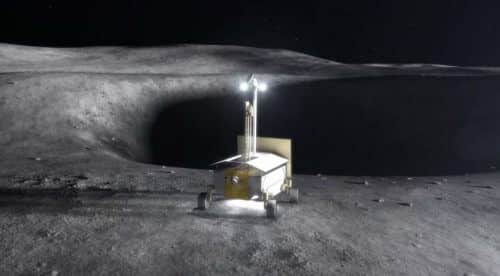Resource Prospector is designed to locate resources on the moon, including water, in order to assess the ability to utilize them for space operations

Taiwan is about to participate in a joint project with the Americans to explore the moon. Chang Shan Institute of Technology and Science is about to develop together with other Japanese scientific institutes a lunar rover named Resource Prospector. He will fly on a NASA spacecraft.
The duration of the flight from the moment of launch until landing is 3 days. The SUV is supposed to dig into the ground and extract hydrogen, oxygen and water. If it turns out to be successful, it will be possible to use the moon as a base from which to launch spacecraft to Mars. This is a large all-terrain vehicle, weighing 3.6 tons, and it must arrive at NASA before the end of 2018. The expected launch date is in 2020 at the earliest, according to a report by Taiwan's government news agency.
NASA scientists hope to reach the water deposits on the moon and develop a mission plan to use the ice and other lunar resources.
NCSIST will develop the lander and NASA will provide the launch systems. Considering that this is the first program of its kind in Taiwan, NCSIST explains that the biggest challenge for the research team is to maintain a normal maintenance condition of the equipment in the space environment.
NASA chose the Taiwanese institute mainly because of NCSIST's performance in international collaborations in space efforts to detect and distinguish high-energy charged particles in space.
NASA, the Taiwanese Space Agency, NCSIST and Academia Sinica signed the agreement earlier this month. NCSIST was founded by the Taiwanese government in 1969 as a military research and development center and systems integration house. His first projects included missiles and radar as well as the integration of ROC systems for military aircraft and ships.
NCSIST has evolved since then and in 1994 became an agency for the development of military and civilian technologies. With the expansion of Taiwan's civilian space program, NCSIST took part in the design of several satellites and launch systems, including scientific rockets for the study of the ionosphere.
More of the topic in Hayadan:

One response
When uranium, gold and silver were mined there, there were outposts in the hands of the Russians, the Chinese and the Americans.